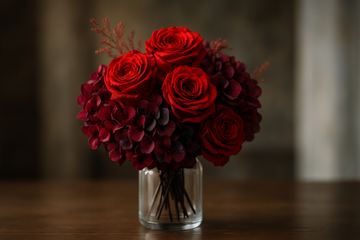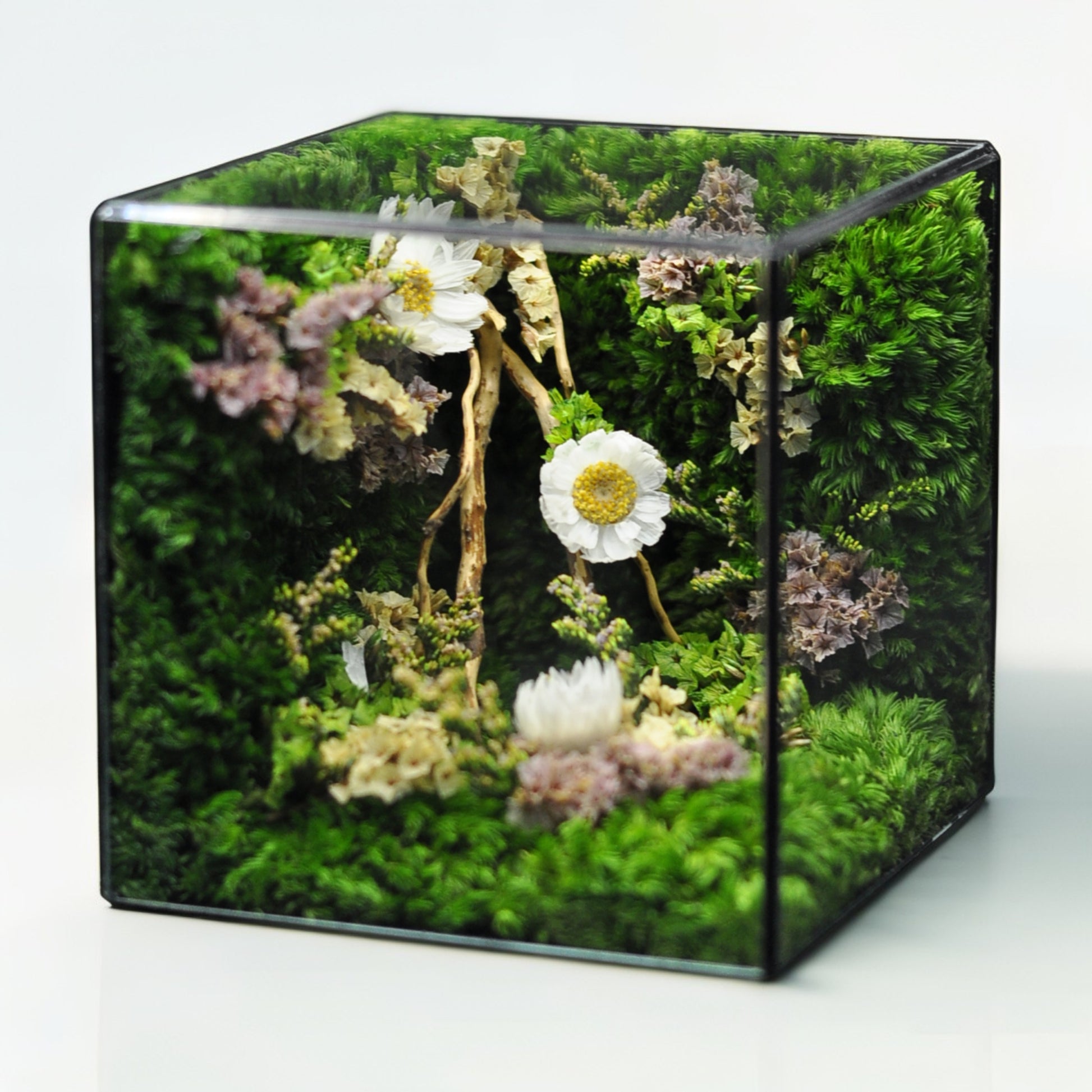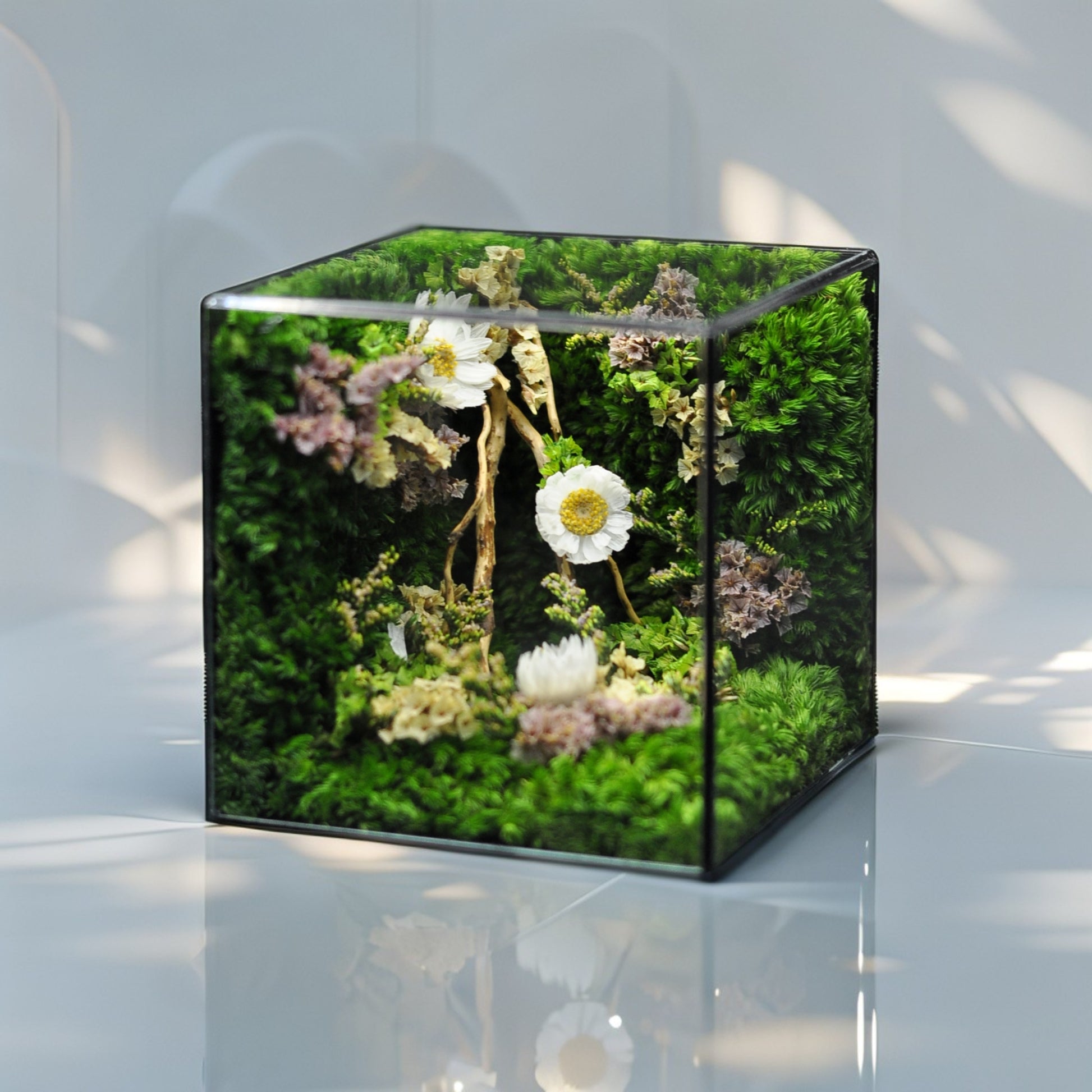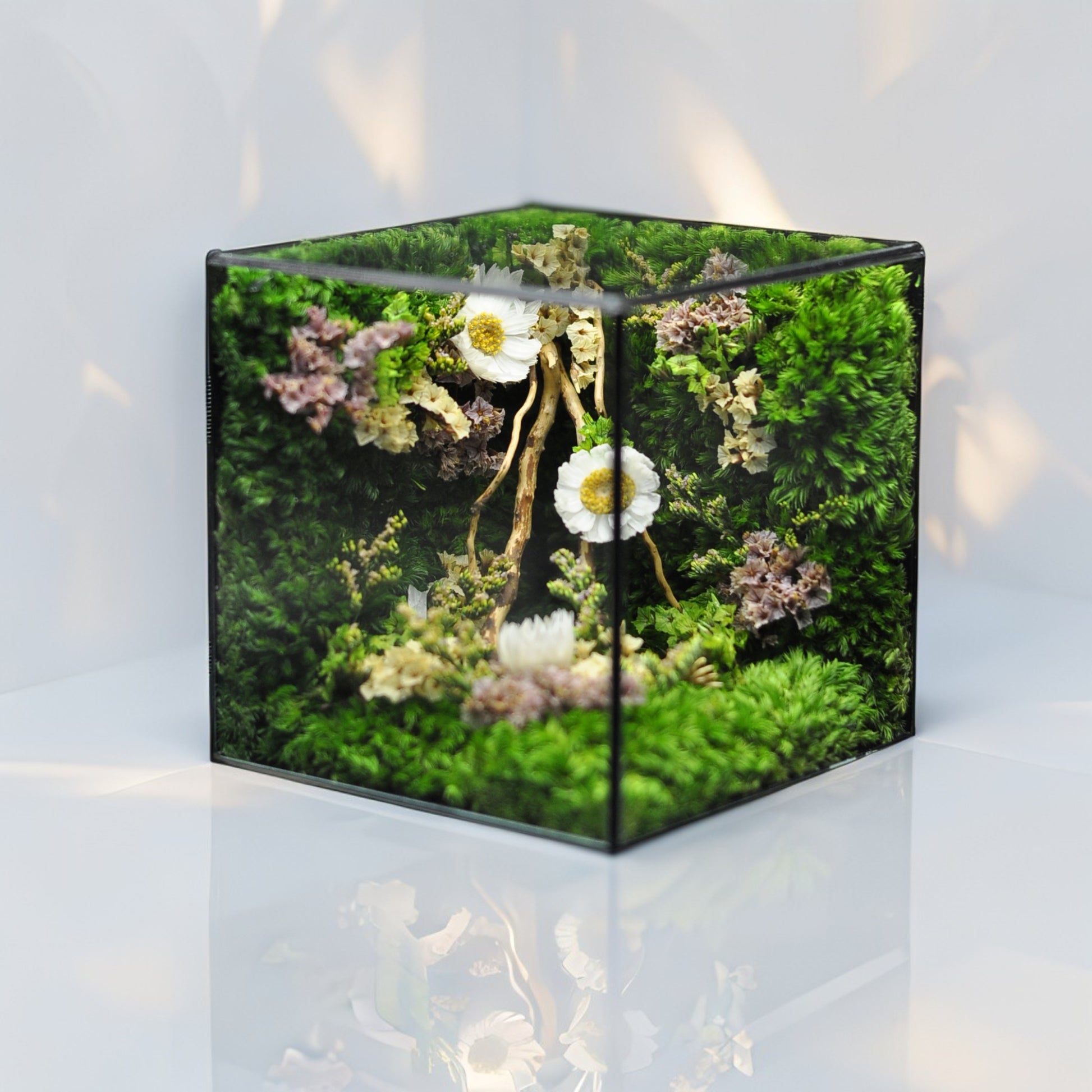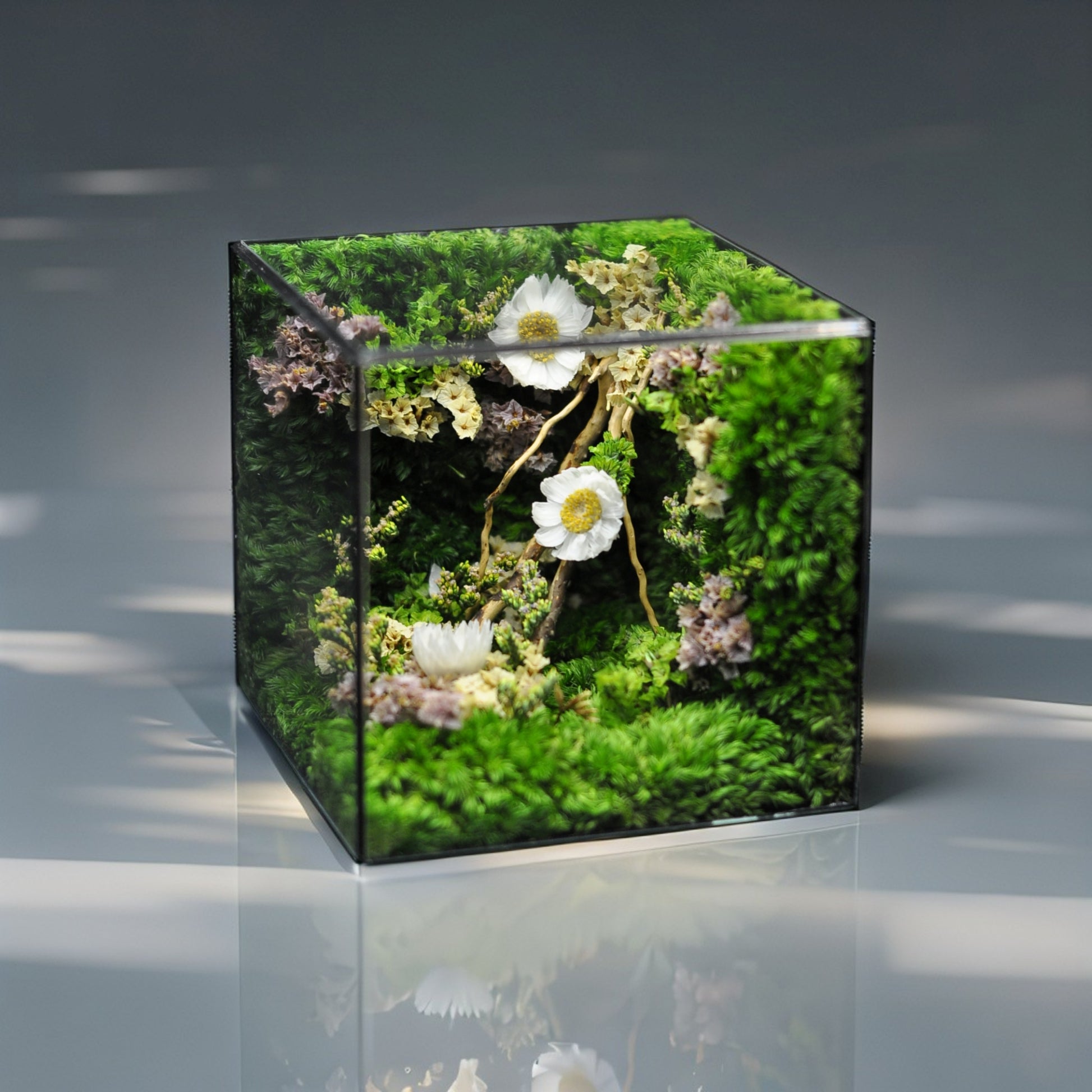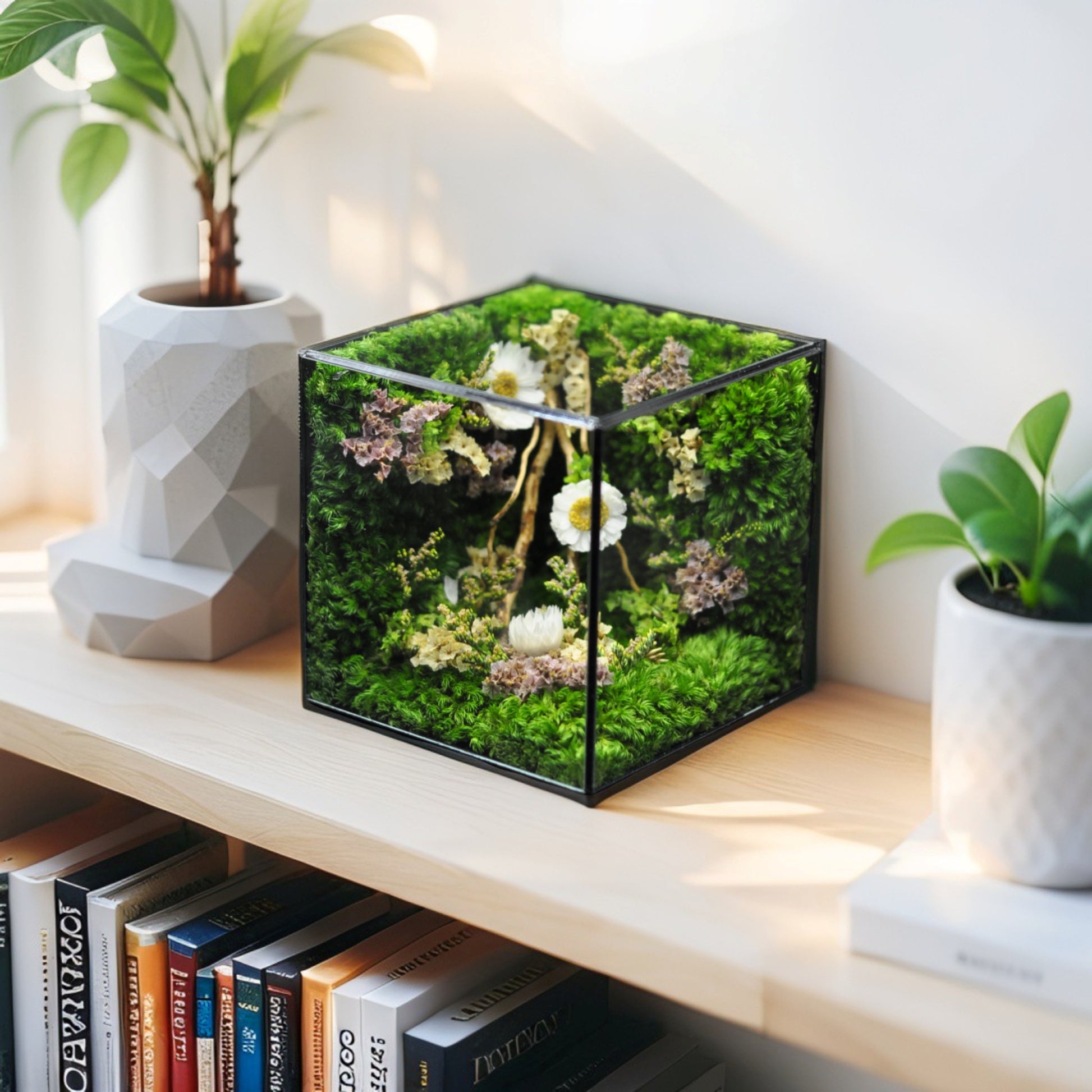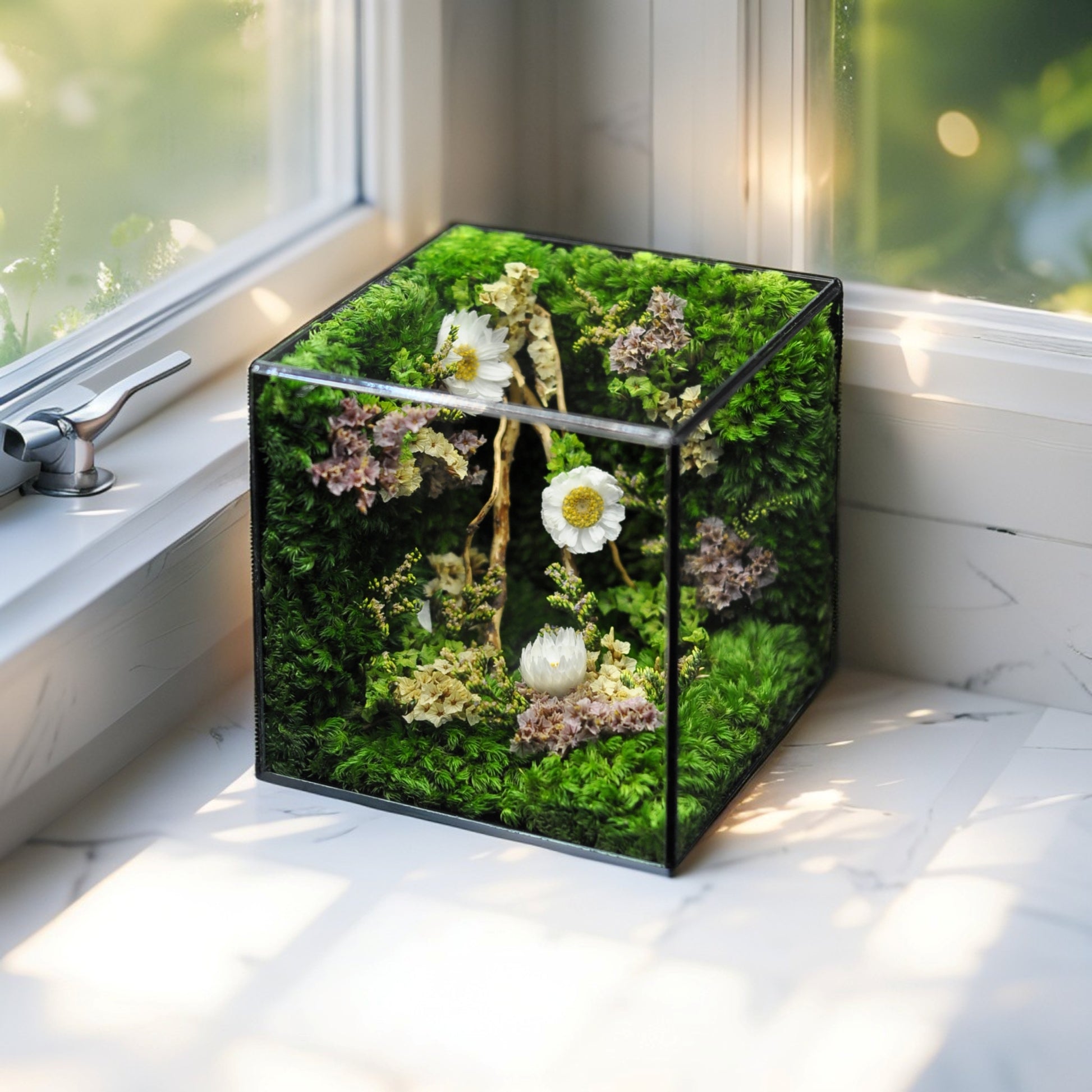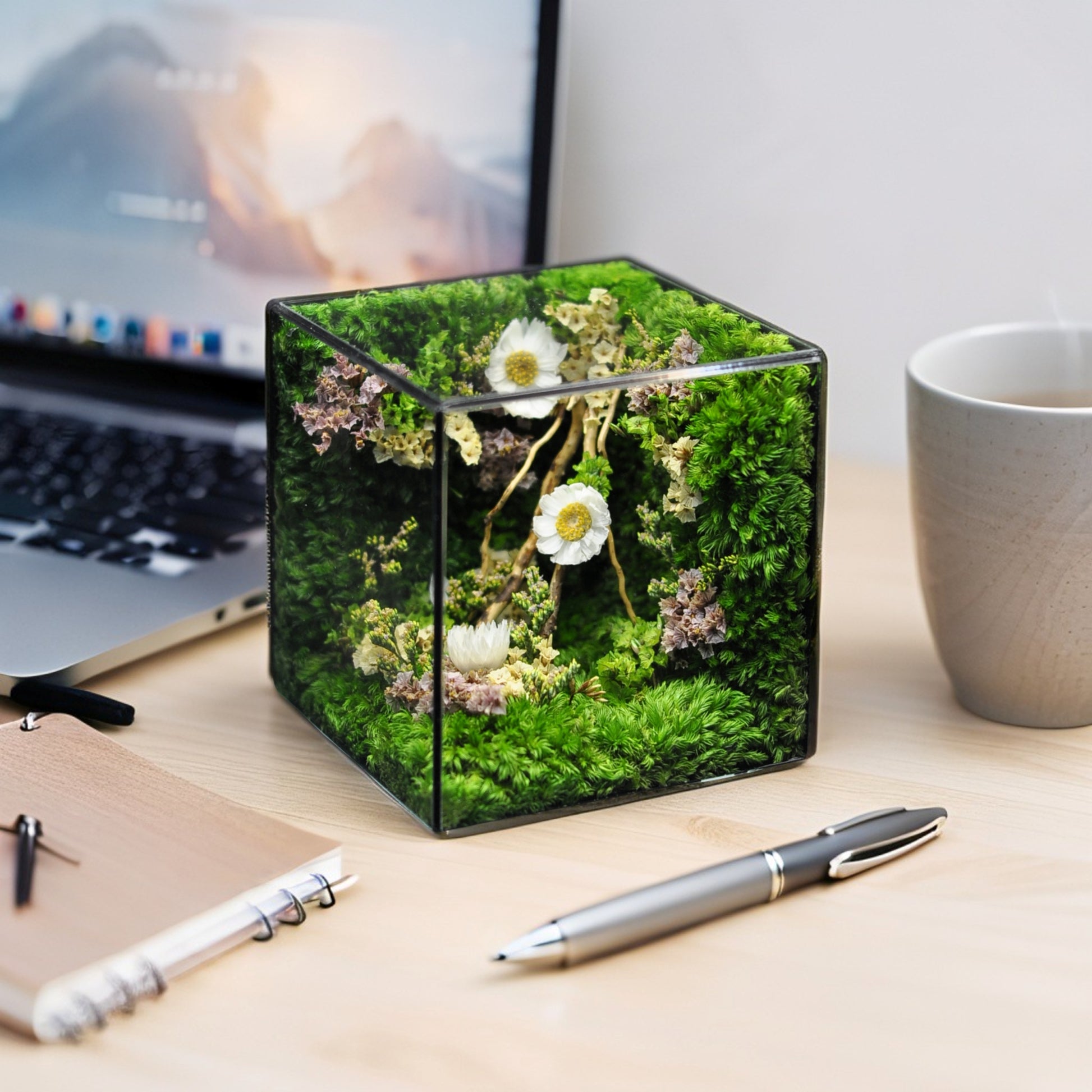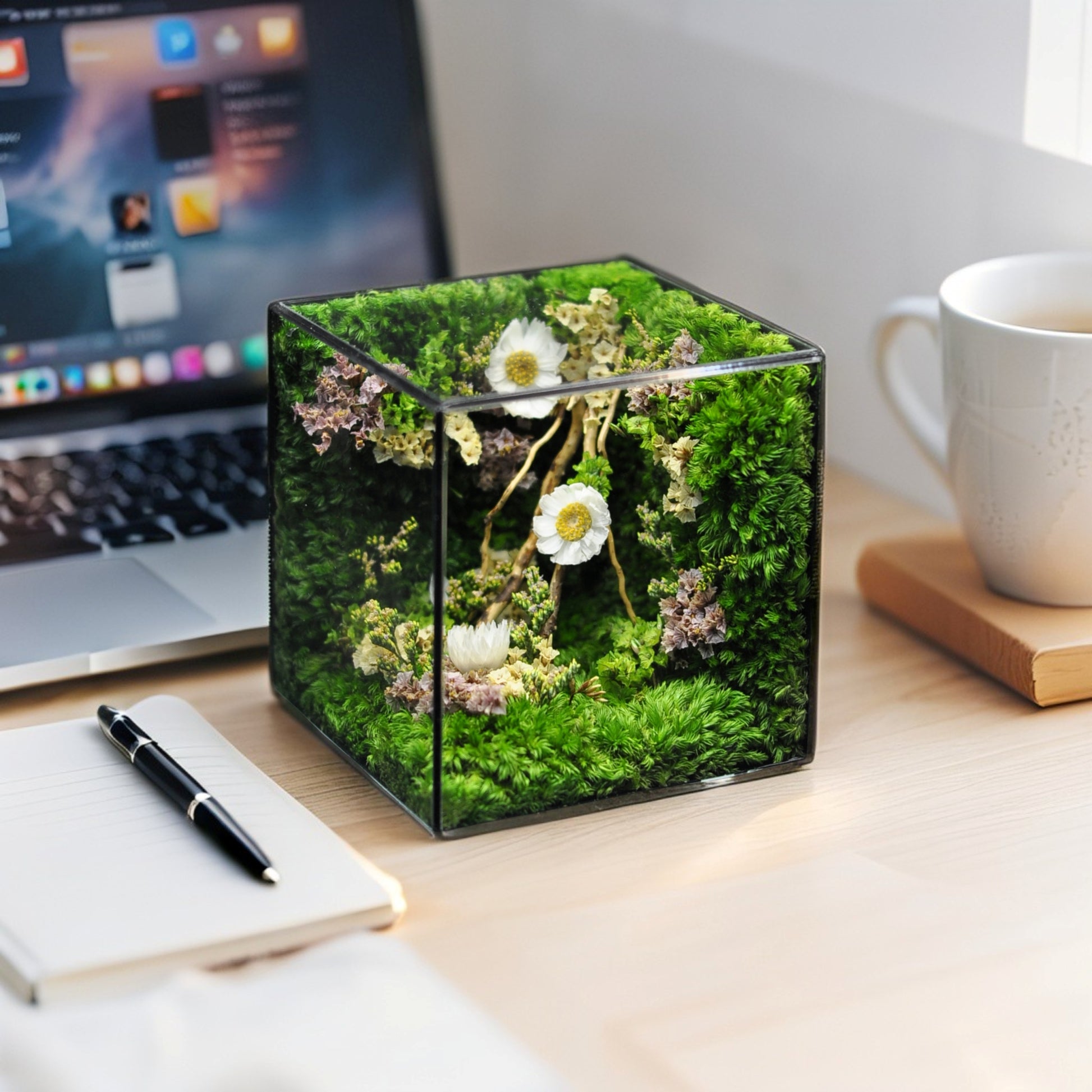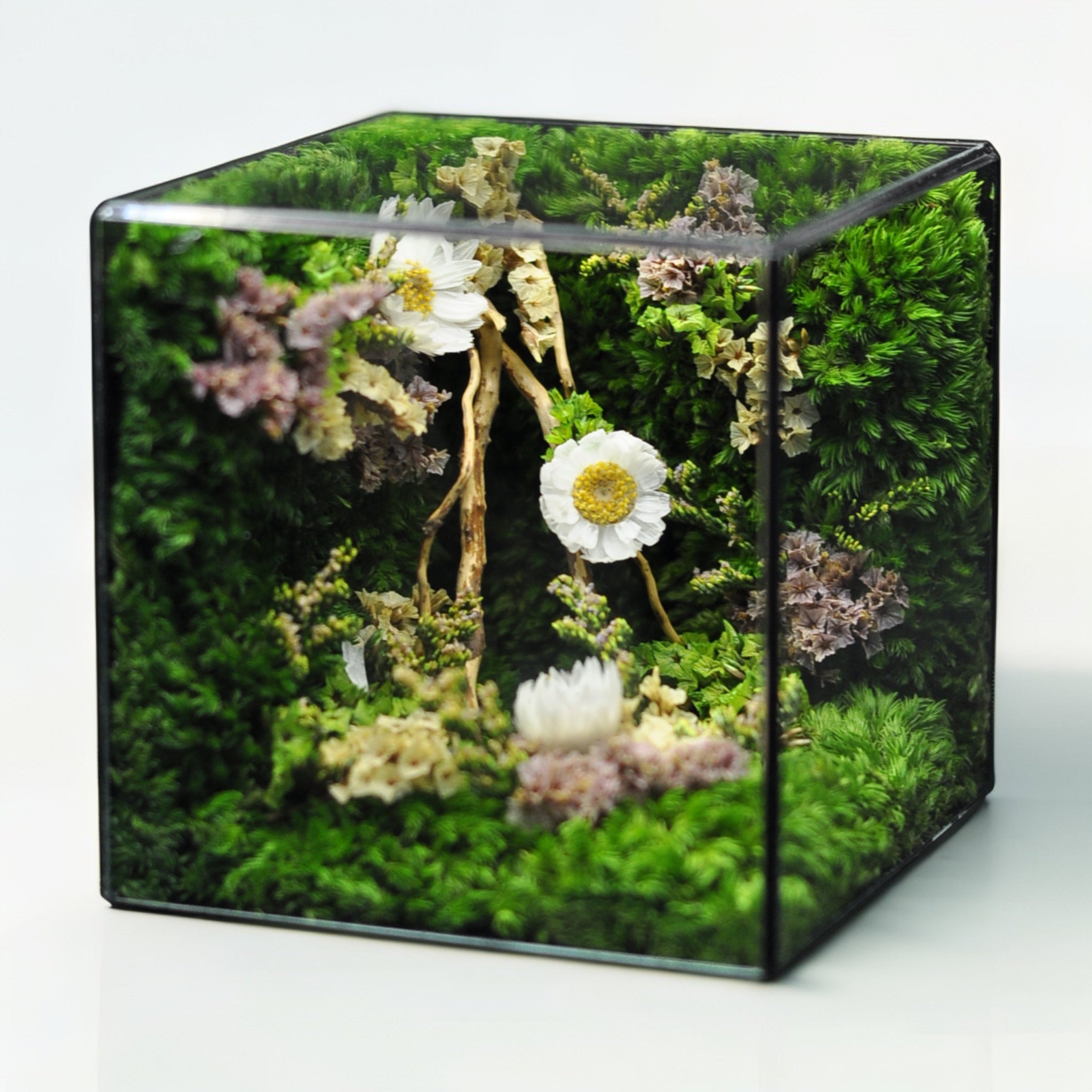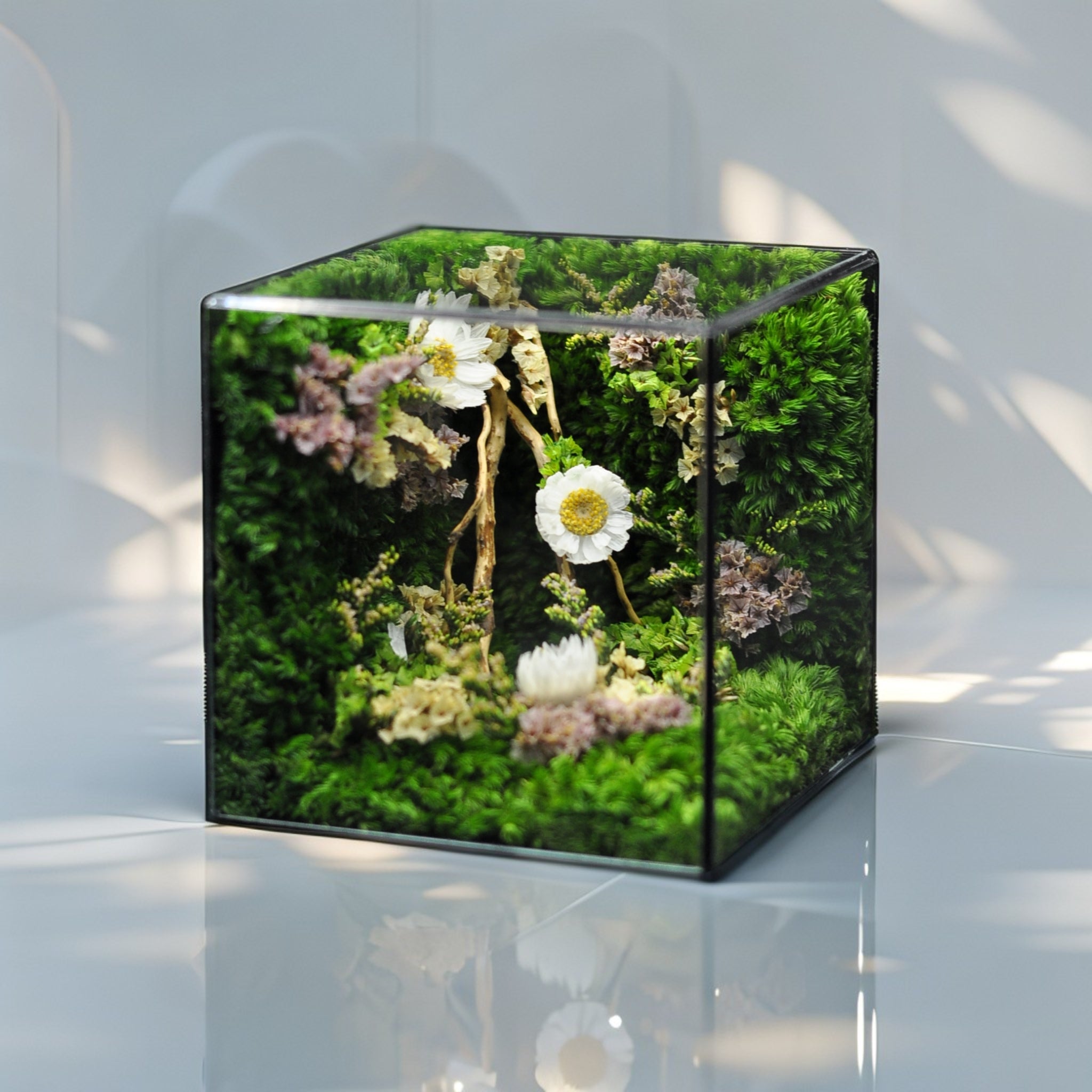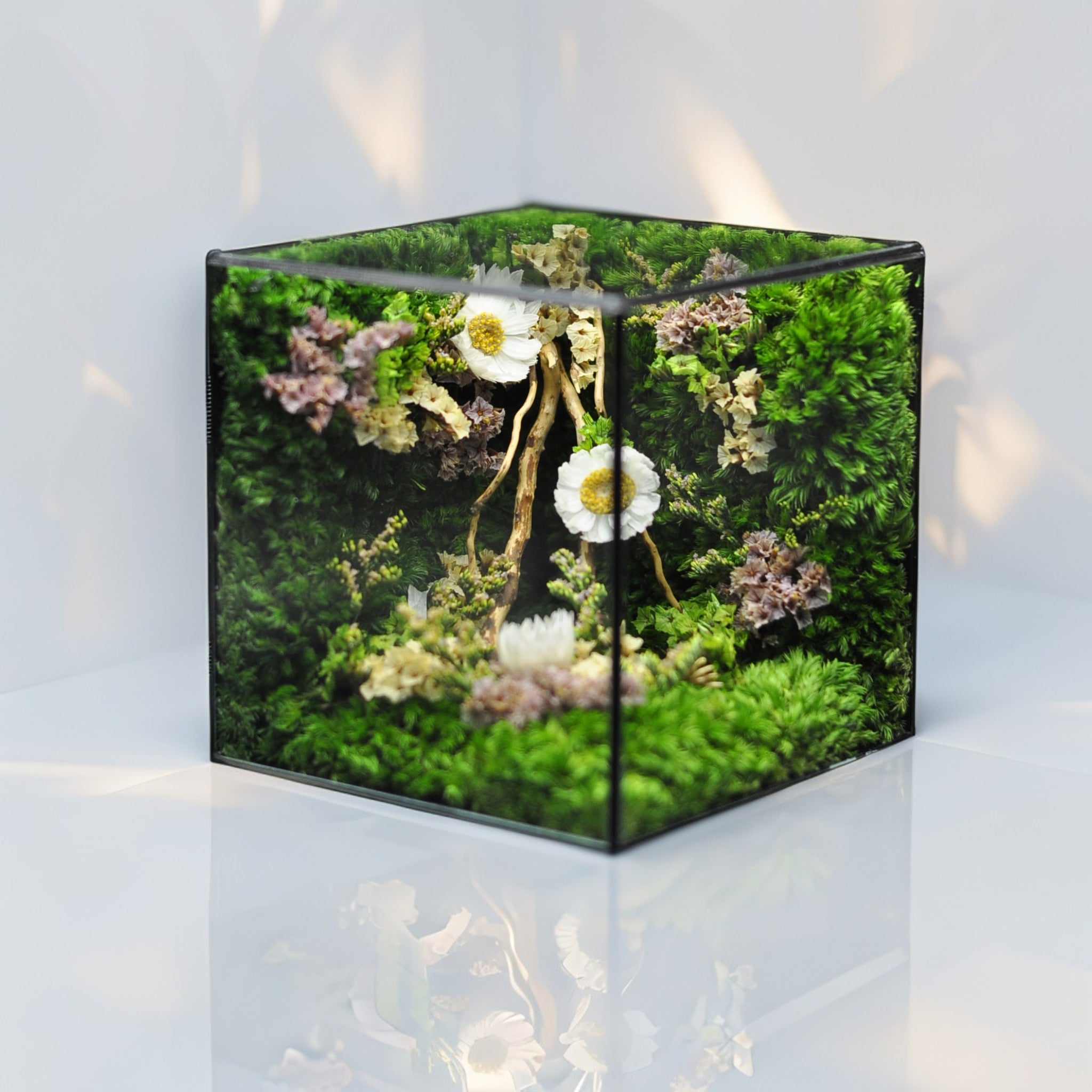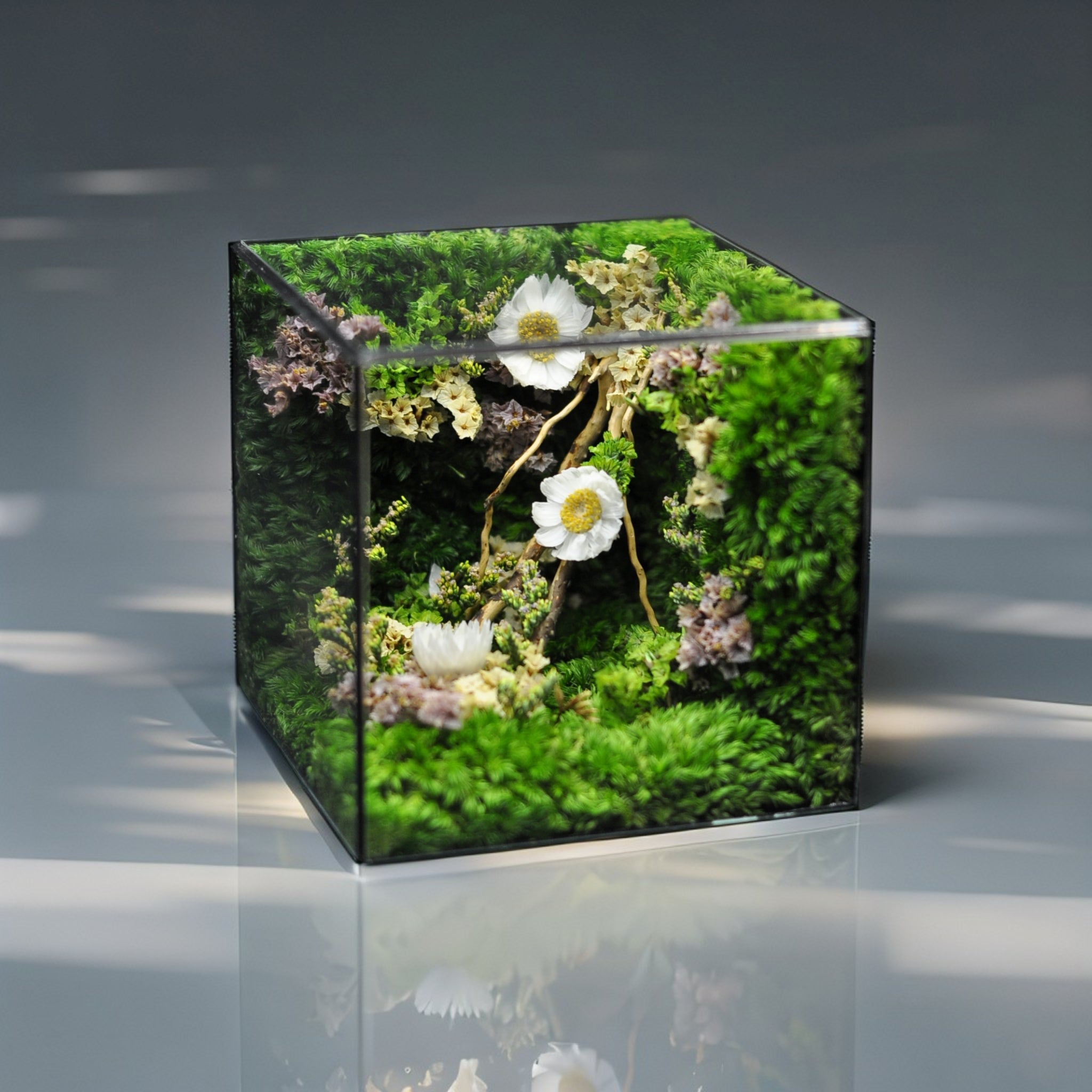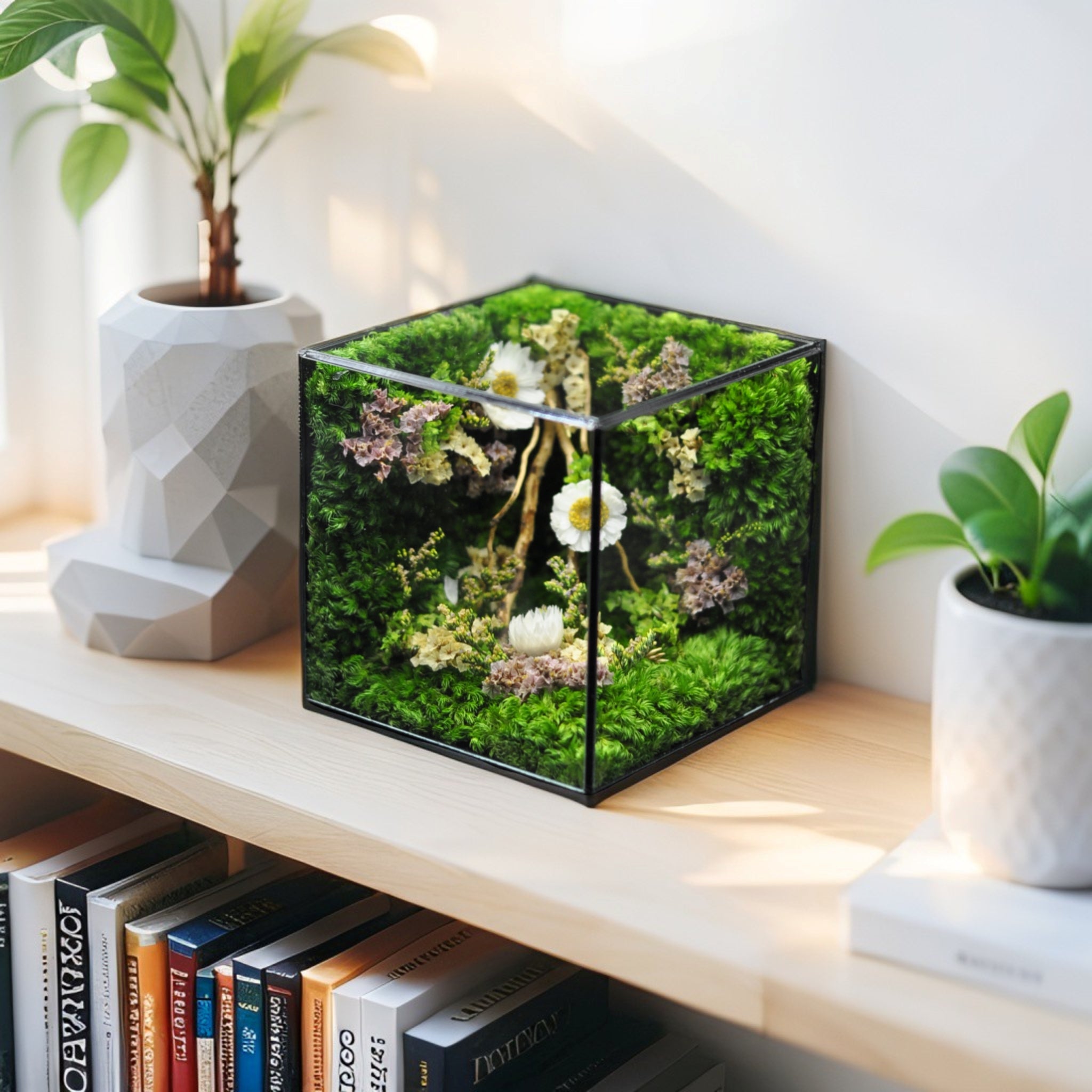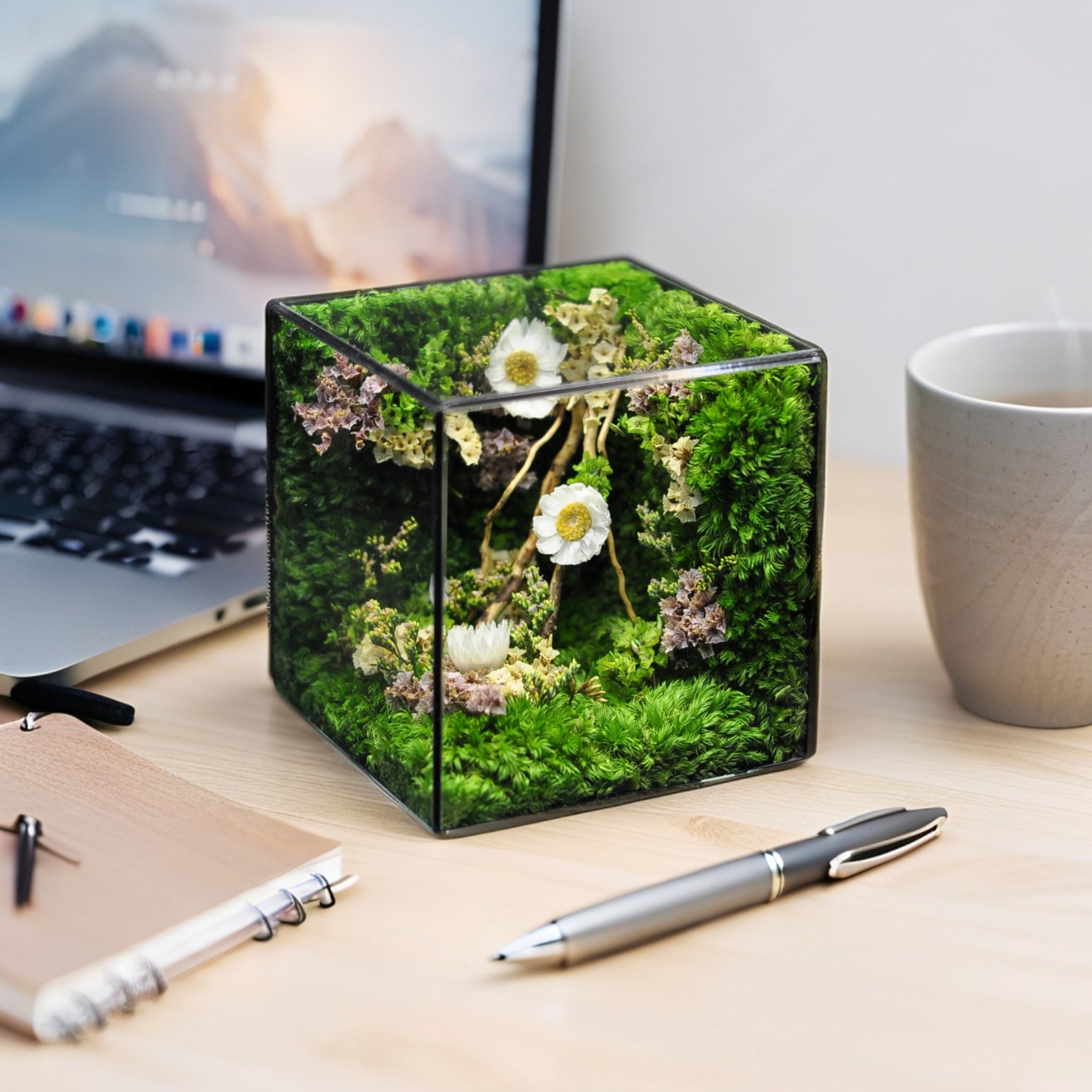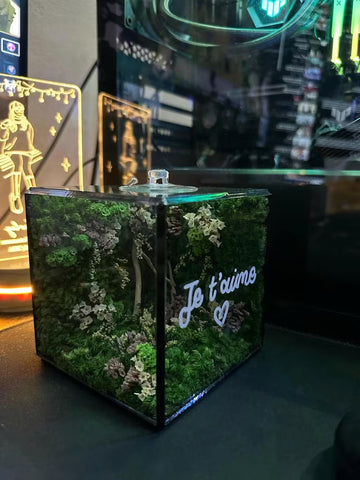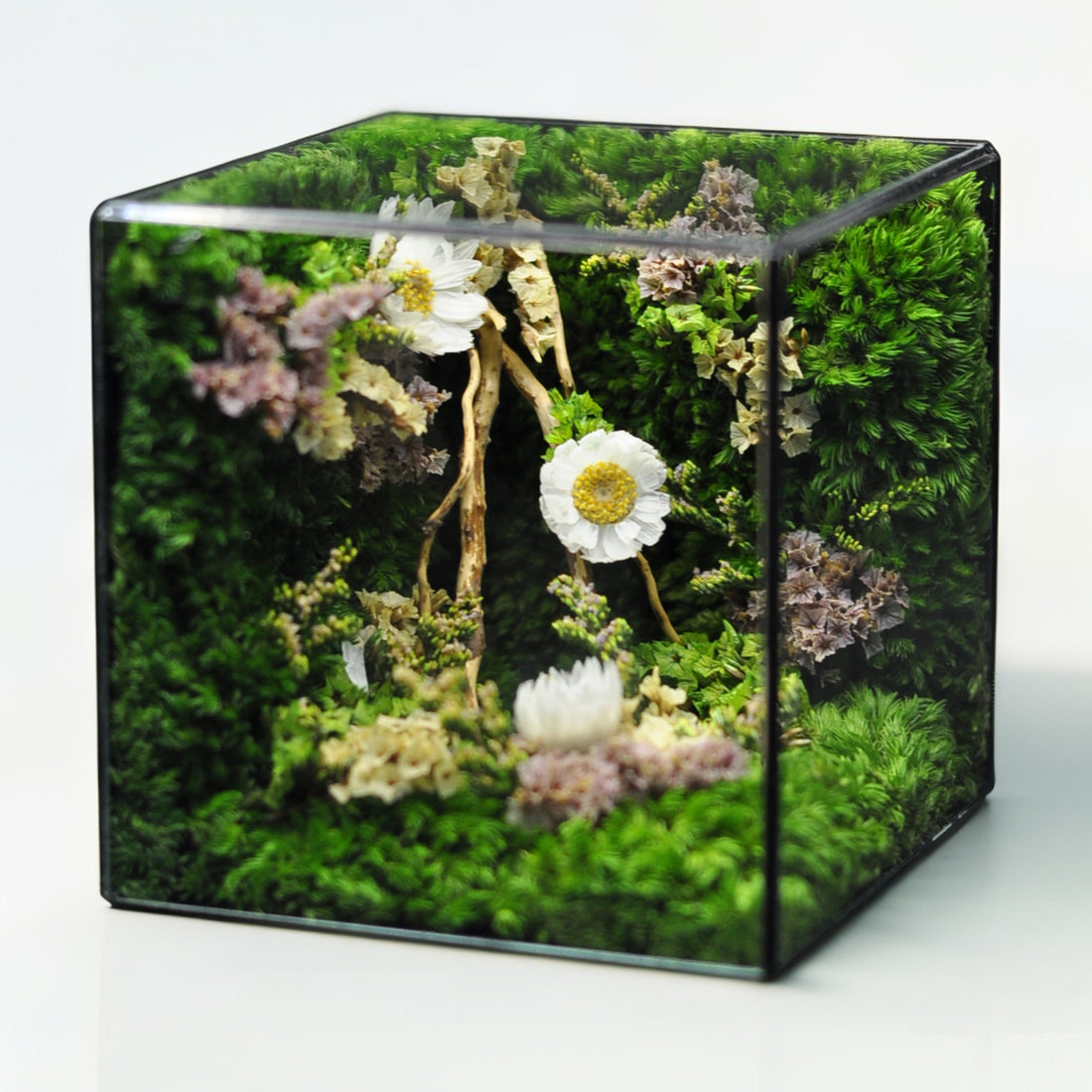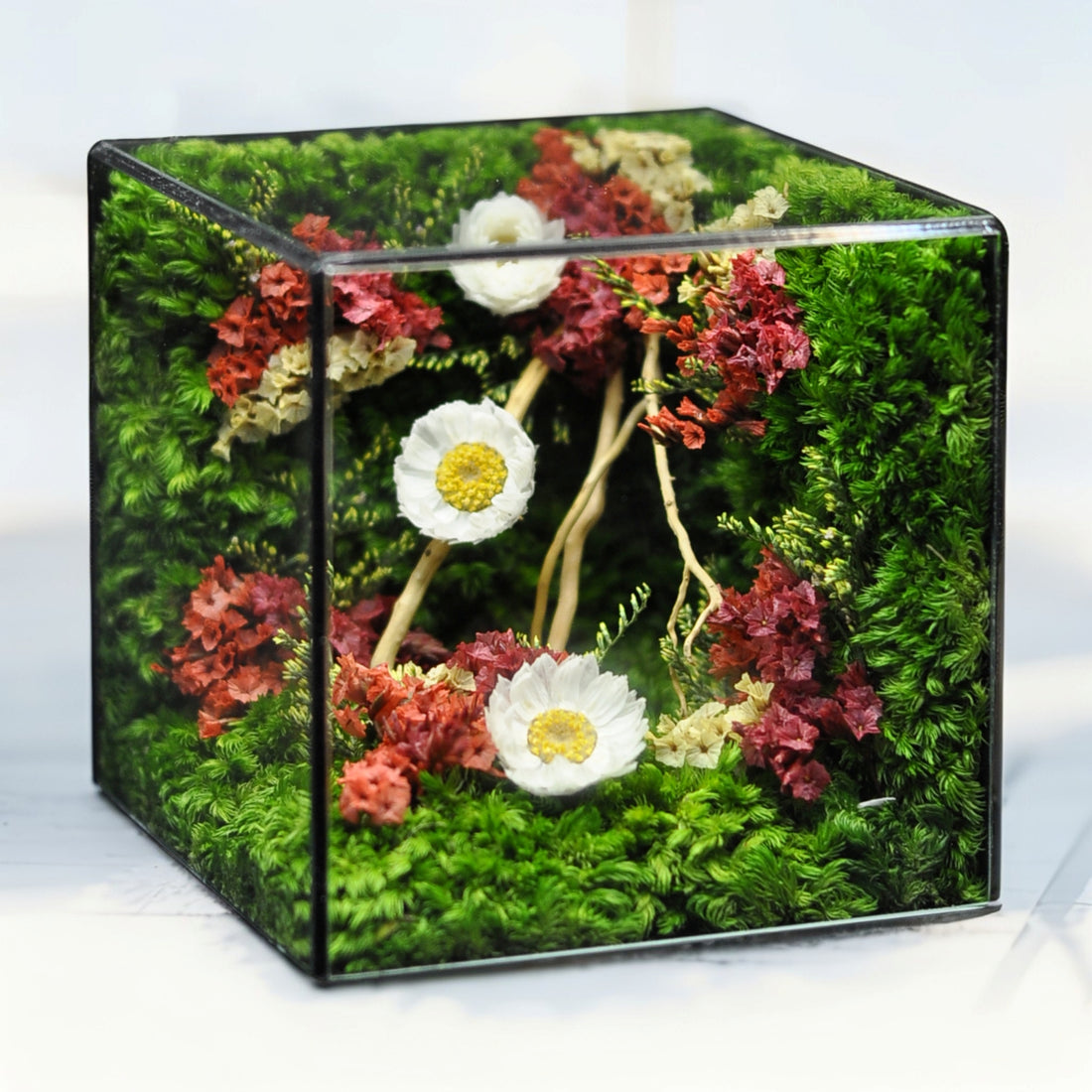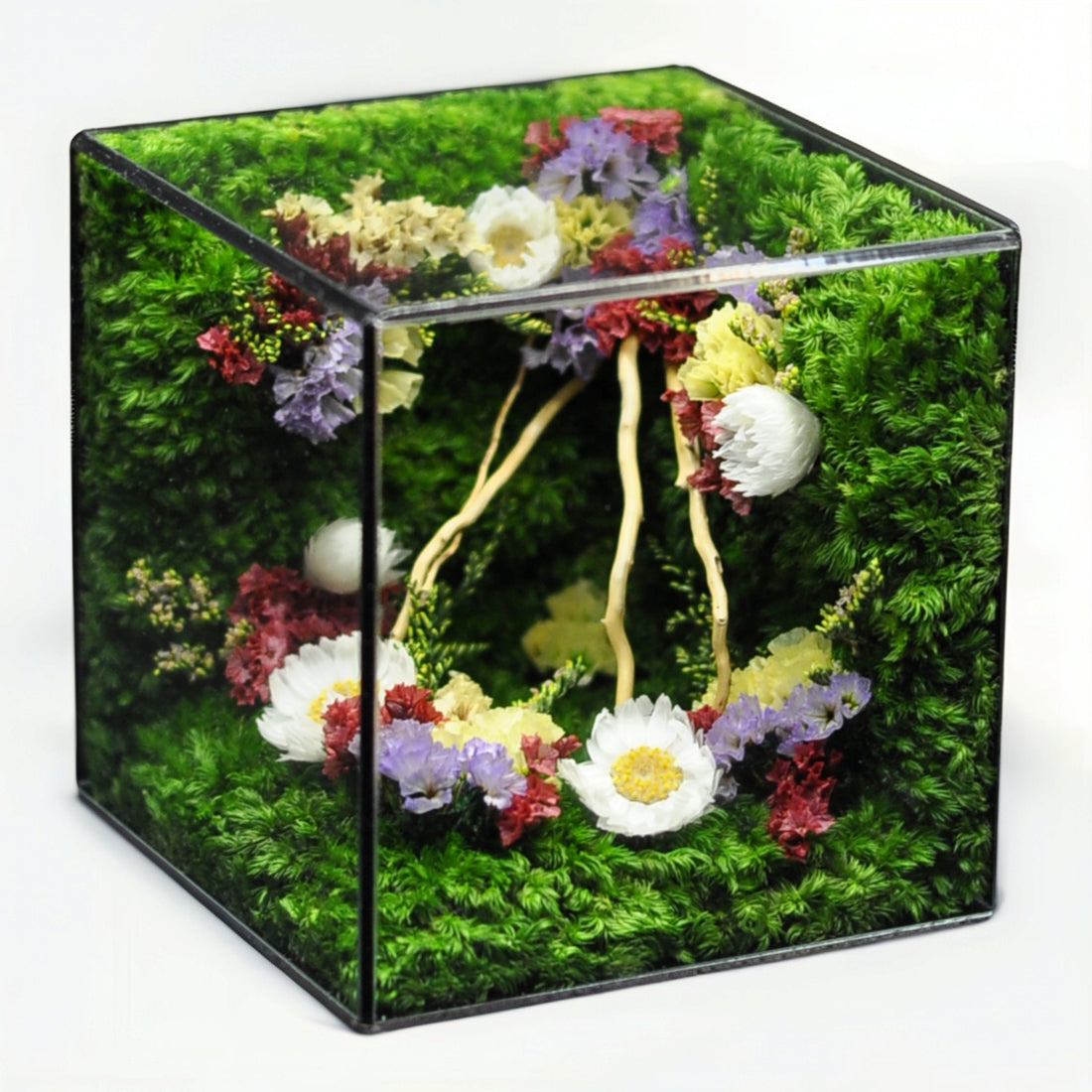Key Takeaways
Choosing between a miniature enclosed ecosystem like a mossarium or a terrarium depends on understanding their distinct needs and characteristics. Below are the key differences that will guide your decision.
- Identify the Core Lifeform: Mossariums are specifically designed to cultivate various types of moss, focusing on their unique growth requirements, while terrariums host a broader range of small, humidity-loving plants.
- Thrive in Low Light with Mossariums: Uniquely, mossariums excel in low-light conditions typically found in offices or north-facing rooms, offering a living green space where most plant-dependent terrariums would struggle.
- Manage Moisture Differently for Optimal Health: Both environments demand high humidity within their enclosure, but mossariums focus heavily on consistent surface moisture for the moss, often requiring misting, while terrariums manage soil moisture for plant roots.
- Select Substrate Specific to Your Ecosystem: Mossariums often utilize simpler, non-nutritive substrates like pebbles or sand to support moss structure, whereas terrariums require soil mixes that provide nutrients and aeration for plant roots.
- Tailor Maintenance to Species Needs: Mossariums generally require less frequent watering and no pruning, primarily focusing on maintaining humidity; terrarium maintenance varies significantly based on the specific plant species enclosed, potentially needing watering, pruning, and ventilation.
- Choose Based on Light, Space, and Care Preference: Your decision should hinge on the natural light available in your chosen location and how much time and specific care you are willing to invest, with mossariums favoring low light and lower maintenance.
To help you make the ideal choice for your space and lifestyle, we will now delve deeper into the specific requirements, creation process, and maintenance of both mossariums and terrariums.
Introduction
What is the difference between a mossarium and a terrarium? Both are sealed glass containers teeming with life, yet their light, moisture, substrate and care demands diverge in surprising ways. Understanding these distinctions ensures your mini-ecosystem thrives in any corner of your home or office.
Let’s explore how light requirements, substrate composition, humidity control and maintenance vary between mossariums and terrariums so you can pick the ideal green companion for your space and lifestyle.
Difference Between a Mossarium and a Terrarium
Ever wondered what sets a mossarium apart from a terrarium? Imagine an emerald miniature forest flourishing on your desk or a lush green carpet brightening a north-facing bathroom. In this guide, we'll explore the difference between a mossarium and a terrarium—definitions, core lifeforms, environmental needs, substrates, plant selections, humidity management, setup, maintenance, design options, and a decision framework—to help you choose the ideal mini-ecosystem for your space and lifestyle.
Mossarium vs Terrarium: Definitions and Core Lifeforms
Definition and Purpose of a Mossarium
A mossarium is a glass container—sealed or semi-open—dedicated exclusively to mosses. Its purpose is to create a high-humidity microclimate where non-vascular plants like sheet, cushion, and feather mosses thrive. Mossariums emphasize simplicity and serenity, offering a low-maintenance focal point for shaded corners, bathrooms, and offices.
Definition and Purpose of a Terrarium
A terrarium is a transparent enclosure—often open-topped—designed to simulate a miniature biome. Layered substrates support diverse vascular plants such as ferns, succulents, air plants, and miniature flowering species. Terrariums showcase textural contrast and semi-self-sustaining moisture cycles, serving as living décor in bright living rooms and sunlit windowsills.
Identifying the Core Lifeform: Moss vs Mixed Plants
• Mossarium: Focuses on a single lifeform—moss (Bryophyta). Mosses rely on capillary hydration and thrive in low light, forming an evergreen carpet.
• Terrarium: Combines multiple plant types—ferns (Polypodiopsida), succulents (Crassulaceae), aroids (Araceae), and more. Each species has distinct light, soil, and watering needs, requiring a balanced environment.
Light Requirements and Ideal Placement
Light Requirements for Mossariums
Mosses are shade-adapted, requiring low to moderate indirect light (50–200 μmol/m²/s). North-facing windows or shaded offices prevent bleaching and algae growth. Direct sun can scorch moss leaflets, so opt for filtered illumination or fluorescent grow lights.
Light Requirements for Terrariums
Terrariums need bright, indirect light to support varied plant photosynthesis. Aim for 200–400 μmol/m²/s, avoiding direct midday sun that overheats glass enclosures. East- or west-facing windows with sheer curtains work well.
How to Choose Between a Mossarium and a Terrarium for Low-Light Spaces
Checklist for low-light interiors:
- If natural light is minimal (under 200 μmol/m²/s) and you seek a carpet-like green display, choose a mossarium.
- If occasional bright indirect light is available and you want plant variety or small flowers, opt for a terrarium with shade-tolerant species.
- For bathrooms or kitchens with high humidity but limited windows, a sealed mossarium is ideal.
- If you enjoy pruning and arranging multiple species, an open terrarium with supplemental LED lighting may suit you better.
Substrate Composition and Plant Selection
Best Substrate for a Mossarium Versus a Terrarium
Mossarium substrate:
- Drainage layer: 1–2″ of pebbles or LECA (Lightweight Expanded Clay Aggregate).
- Filter (optional): Thin activated charcoal for odor control (RHS, 2021).
- Moisture reservoir: Damp sphagnum moss or coco coir.
- Growing medium: ½–1″ fine peat or pine bark mix.
Terrarium substrate:
- Drainage: 1–2″ gravel or LECA.
- Filtration: ¼″ activated charcoal.
- Potting mix: 2–3″ well-draining soil (mix with orchid bark or perlite).
- Top layer: Decorative moss, stones, or bark.
Selecting Moss Species for Mossariums
Consider size, growth rate, and texture:
- Leucobryum glaucum (Pincushion Moss): Forms dense rounded mounds, slow-growing, bright green.
- Hypnum cupressiforme (Cypress-Leaved Plait Moss): Spreads rapidly, soft feathery mats, medium light tolerance.
- Dicranum scoparium (Broom Moss): Creates upright tufts, tolerant of variable humidity, slow to moderate growth.
Selecting Humidity-Loving Plants for Terrariums
Choose compact, shade-tolerant species:
- Nephrolepis exaltata ‘Boston’ (Boston Fern): Feathery fronds, medium light, high humidity.
- Adiantum raddianum (Delta Maidenhair Fern): Delicate leaflets, low to medium light, keeps soil moist.
- Fittonia albivenis (Nerve Plant): Colorful veined foliage, thrives in partial shade and moist substrate.
Humidity Control and Moisture Management
Humidity Control in Mossariums vs Terrariums
- Mossariums: Sealed lids trap moisture, maintaining high relative humidity (often above 90%). Actual levels vary with seal quality and room temperature.
- Terrariums: Open vessels require manual misting or humidity trays to sustain 50–70% humidity. Closed terrariums behave like mossariums but accommodate mixed plants.
Surface Misting vs Soil Moisture Monitoring
-
Surface Misting
– Pros: Hydrates moss foliage, prevents dry patches, reduces substrate compaction.
– Cons: May lead to algae on glass, inconsistent moisture depth. -
Soil Moisture Monitoring
– Pros: Ensures root zone hydration for terrarium plants, prevents overwatering.
– Cons: Requires a moisture meter or finger test, less effective for moss-only setups.
How Often Should I Water a Mossarium Versus a Terrarium?
- Mossarium: Mist lightly 2–3 times per week with distilled or rainwater. Watch for water beads—too much leads to mold.
- Closed Terrarium: Water sparingly once a month; rely on condensation.
- Open Terrarium: Water weekly to biweekly, keeping soil just moist without runoff.
Setup Guide: Building Your Mini-Ecosystem
How to Create and Maintain a Mossarium Step-by-Step
- Clean the container with hot water; avoid soaps.
- Add 1–2″ of pebbles or LECA.
- (Optional) Sprinkle a thin layer of activated charcoal.
- Place damp sphagnum moss evenly.
- Top with ½–1″ fine peat or pine bark.
- Arrange moss gently, leaving small air pockets.
- Mist until beads form; seal and position in low light.
“Don’t worry if your first layout isn’t perfect—moss self-adjusts over time.”
How to Create and Maintain a Terrarium Step-by-Step
- Layer 1–2″ of gravel or LECA for drainage.
- Add ¼″ activated charcoal.
- Fill with 2–3″ potting mix blended with orchid bark.
- Plant larger specimens first, then ground covers.
- Decorate with stones, figurines, or additional moss.
- Water sparingly to moisten soil.
- Place in bright, indirect light and monitor for condensation.
Maintenance and Care Routines
Routine Maintenance for Mossariums
- Inspect weekly for mold or dry patches.
- Trim brown or overgrown moss tufts.
- Wipe interior glass with a soft cloth.
- Allow brief airing (30 minutes) if condensation persists.
Routine Maintenance for Terrariums
- Prune overhanging foliage.
- Check soil moisture with a meter or finger.
- Clean glass inside and out.
- Remove yellowing leaves promptly.
Which Is Easier to Maintain: a Mossarium or a Terrarium?
- Mossarium: Lower diversity means simpler watering and pruning. High humidity is self-regulating in sealed jars. Best for beginners who want minimal tasks.
- Terrarium: Requires balancing moisture for different species, more frequent pruning, and occasional soil checks. Ideal for hobbyists who enjoy active plant care.
Aesthetic Design and Display Options
Comparing Visual Appeal: Mossariums vs Terrariums
- Mossariums: Uniform, vibrant green carpet—perfect for minimalist décor and zen-style displays.
- Terrariums: Layered textures and colors—from fern fronds to tiny blossoms—adding dynamic interest.
Container Styles and Decorative Accents
- Mossariums: Wall-mounted frame terrariums, hanging glass orbs, bell jars.
- Terrariums: Geometric glass bowls, repurposed aquariums, mason jars with cork lids.
- Accents: River stones, driftwood, miniature figurines, colored sand (for decoration only).
Incorporating Your Mini-Ecosystem into Home and Office
Micro-Case Studies:
- Dorm Desk: A 4″ glass cube mossarium brightened a shaded dormitory desk, requiring only weekly misting to stay lush.
- Windowless Bath: A sealed bell jar mossarium thrived on ambient steam, transforming the bathroom into a spa-like retreat.
- Sunny Study: An open terrarium with Fittonia and Nephrolepis ‘Boston’ added color and humidity, improving air freshness and focus.
Decision Framework: Choosing Your Ideal Green Companion
Assessing Light, Space, and Care Preferences
- Low Light + Low Effort → Mossarium
- Bright Indirect Light + Plant Variety → Terrarium
- Budget under $50 + Compact Space → Small mossarium jar
- Decorative Impact + Variety → Larger terrarium with mixed accents
Terrarium vs Mossarium: Quick-Reference Comparison Table
| Aspect | Mossarium | Terrarium ||-------------------|----------------------------------------------|------------------------------------------------|| Core Lifeform | Pure moss (Bryophyta) | Mixed vascular plants || Light | Low to moderate indirect | Bright indirect || Humidity | High (sealed) | Moderate (50–70%) || Substrate | Pebbles/LECA, sphagnum, peat | Gravel/LECA, charcoal, potting mix || Maintenance | Misting 2–3×/week, minimal pruning | Watering weekly, regular pruning & soil checks || Ease of Care | Beginner-friendly | Moderate effort || Best Placement | North-facing rooms, bathrooms, offices | Sunlit windowsills, bright living spaces || Approx. Cost | $30–$60 | $50–$150 |
Final Tips for Beginners
- Start small: A 4–6″ mason jar is forgiving and budget-friendly.
- Source moss responsibly: Choose sustainably farmed or nursery-grown varieties.
- Use distilled or rainwater to prevent mineral buildup.
- Monitor moisture daily during the first month to find your routine.
- Open your mossarium occasionally (15–30 minutes) to exchange air and prevent mold.
- Avoid placing containers near HVAC vents or direct sunlight.
- Be patient: Mini-ecosystems stabilize over weeks—small adjustments go a long way.
FAQs
Q: Can I open my mossarium occasionally?
A: Yes—brief airing (15–30 minutes) every few weeks helps prevent mold without drastically lowering humidity.
Q: How do I know when my terrarium is overwatered?
A: Look for yellowing leaves, soggy soil, or persistent condensation. Reduce watering and improve airflow.
Q: What if algae grows on the glass?
A: Wipe with a soft cloth, reduce misting, and adjust light levels to minimize algae-friendly conditions.
With these insights and guidelines, you’re ready to choose and create the perfect mossarium or terrarium—transforming your space into a living work of art.
Conclusion
Mossariums and terrariums each offer unique ways to bring living art into your home or office. Mossariums provide a low-light, low-maintenance haven with a uniform moss carpet that thrives in sealed, humid conditions. Terrariums deliver visual diversity through layered substrates and mixed plant species, requiring brighter light and more attentive watering and pruning routines. By assessing your space, light availability, and care commitment—alongside budget and design goals—you can select the ideal mini-ecosystem to complement your lifestyle. Whether you favor the serene simplicity of moss or the dynamic textures of a mixed terrarium, these miniature worlds enhance both décor and air quality. Which green companion will you cultivate to transform your surroundings and enrich your daily routine?
Frequently Asked Questions (FAQ)
Q: What is the main difference between a mossarium and a terrarium?
A: A mossarium is a sealed or semi-open glass container dedicated exclusively to mosses, creating a high-humidity microclimate for non-vascular plants. A terrarium is often open-topped, with layered substrates supporting a diverse mix of vascular plants and semi-self-sustaining moisture cycles.
Q: How do I create and maintain a mossarium?
A: Clean a glass container, add 1–2″ of pebbles or LECA, optionally sprinkle activated charcoal, place damp sphagnum moss, top with ½–1″ fine peat or pine bark, arrange moss with air pockets, mist until beads form, seal, and position in low indirect light. For maintenance, mist 2–3 times weekly, trim brown patches, wipe glass, and air for 15–30 minutes if condensation persists.
Q: What substrate is best for a terrarium?
A: Use 1–2″ of gravel or LECA for drainage, ¼″ activated charcoal for filtration, 2–3″ of well-draining potting mix blended with orchid bark or perlite, and finish with decorative moss, stones, or bark on top.
Q: How often should I water a mossarium versus a terrarium?
A: Mist a mossarium 2–3 times per week with distilled or rainwater. For a closed terrarium, water sparingly once a month and rely on condensation. For an open terrarium, water weekly to biweekly, keeping soil just moist without runoff.
Q: Which is easier to maintain, a mossarium or a terrarium?
A: Mossariums are beginner-friendly, with simpler misting and minimal pruning in self-regulating sealed jars. Terrariums require balancing moisture for multiple species, more frequent pruning, and soil checks, suiting hobbyists who enjoy active plant care.
Q: What light requirements and placements suit mossariums versus terrariums?
A: Mossariums thrive in low to moderate indirect light (50–200 μmol/m²/s), ideal for north-facing windows, shaded offices, or humid bathrooms. Terrariums need brighter indirect light (200–400 μmol/m²/s), best placed in east- or west-facing windows with sheer curtains.
Q: Can I open my mossarium occasionally?
A: Yes—brief airing for 15–30 minutes every few weeks helps prevent mold without significantly lowering humidity.






